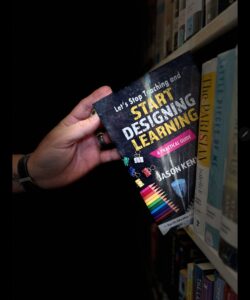We are uncomfortable. The latest 2024 NAEP scores for reading and math confirm what we’ve been feeling for a while now—achievement is slipping, and the weight of that reality is pressing down on us. Reading scores have fallen to their lowest levels in 30 years. Math hasn’t rebounded to pre-pandemic levels. The gap is growing. And we feel it in our bones.
We stress over it. We internalize it. We overwork ourselves chasing achievement that feels just beyond our reach. We tweak lessons, add interventions, pile on tutoring, and yet the results don’t seem to match the sheer amount of effort we put in. It’s frustrating, exhausting, and—yes—uncomfortable.
But what if discomfort wasn’t something to run from? What if we could harness it instead of reacting to it? What if we stopped choosing the discomfort that drains us and instead leaned into the discomfort that transforms?
Discomfort is Inevitable—Let’s Make It Worth It
Right now, our discomfort is the kind that leads to burnout. It’s the exhaustion of doing the same things harder and expecting different results. It’s the weariness of trying to fit students into our teaching instead of designing learning to fit our students.
But there’s another kind of discomfort—the kind that comes from real change. It’s the discomfort of stepping into unfamiliar instructional territory. The discomfort of questioning our own deeply held beliefs about what teaching is supposed to look like. The discomfort of breaking free from the way we’ve always done things.
One is exhausting. The other is productive. If discomfort is inevitable, shouldn’t we at least choose the kind that leads to something better?
Teaching the Way They Learn
We say it all the time: If kids aren’t learning the way we teach, we have to teach the way they learn. But saying it and living it are two different things. Because if we really mean it, then something has to change. And change is hard.
It’s not just about throwing in a new strategy here and there. It’s about designing learning—not just delivering lessons. It’s about structuring our classrooms so students are actively constructing knowledge, not passively receiving it. It’s about shifting from compliance-driven work to engagement-driven thinking.
That kind of shift doesn’t happen by accident. It happens when we intentionally choose to get uncomfortable for the right reasons.
The Onus is On Us
We are the designers of learning. Not the students. Not their parents. Not the system. Us.
If learning isn’t happening, that’s not a student problem—it’s a design problem. And we can fix design problems. We have control over them.
The question is: Will we?
Will we choose to let go of outdated structures that prioritize covering content over actual learning? Will we choose to make student thinking visible, even if it disrupts our predictable routines? Will we choose to teach for long-term understanding rather than short-term performance? Will we choose the discomfort that leads to growth over the discomfort that leads to burnout?
We get to decide.
Stop Reacting. Start Designing.
Discomfort is a given in this profession. But we get to choose whether it works against us or for us. If we are going to be uncomfortable anyway, let’s at least make sure it’s moving us toward something better.
Let’s stop letting our discomfort be a reaction and start making it proactive. Let’s stop trying to squeeze achievement out of the same tired methods and start designing learning that actually works.
It won’t be easy. It won’t always feel good. But it will be worth it. Because when students learn—actually learn—that’s the kind of discomfort we can live with.


